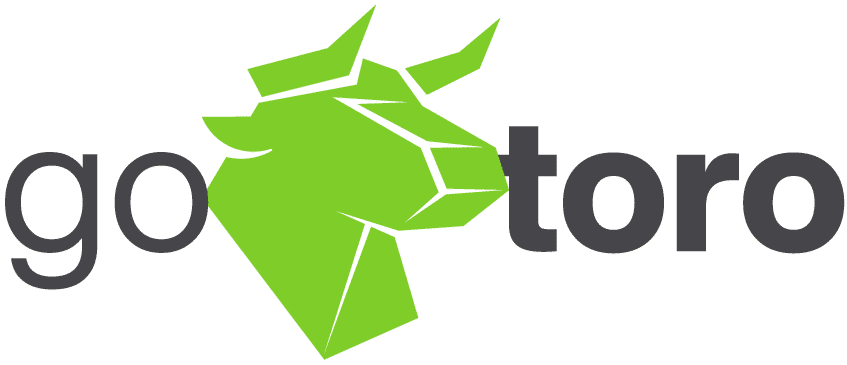Recruitment in 2024 is experiencing significant changes driven by technological advancements and evolving candidate preferences. The recruitment landscape has transformed dramatically over the past few years, with new tools and techniques revolutionizing how companies attract, screen, and hire talent. Staying updated with recruitment trends is crucial for businesses to remain competitive and ensure they can attract top talent in an increasingly dynamic job market.
In this blog post, we will explore the key technological advancements shaping recruitment in 2024, including AI and machine learning, automation, and the technology behind modern recruitment processes. Understanding these trends will help you optimize your hiring strategy and stay ahead in the competitive talent acquisition landscape.
Technological Advancements in Recruitment

AI and Machine Learning Transforming Recruitment Processes
AI and machine learning are at the forefront of recruitment in 2024. These technologies are transforming how companies identify and engage with potential candidates. AI-driven tools can analyze vast amounts of data to identify patterns and predict candidate success, making the recruitment process more efficient and effective. Machine learning algorithms continuously improve by learning from previous hiring decisions, enabling more accurate candidate matching and reducing bias in the hiring process.
The Role of Automation in Screening and Interviewing Candidates
Automation plays a significant role in recruitment in 2024, particularly in screening and interviewing candidates. Automated systems can handle repetitive tasks such as resume screening, initial candidate outreach, and scheduling interviews, freeing up recruiters to focus on more strategic activities. Chatbots and virtual assistants are also being used to engage with candidates, providing instant responses to queries and ensuring a seamless candidate experience. Automation not only speeds up the hiring process but also ensures consistency and fairness in candidate evaluation.
The Technology Behind Recruitment: Algorithms, AI, Machine Learning, Data Analytics, and Automated Ad Platforms
The technology behind recruitment in 2024 encompasses a range of advanced tools and techniques designed to optimize the hiring process. Algorithms and AI are used to analyze candidate data and match them with job requirements, ensuring a better fit and higher success rates. Machine learning continuously improves these algorithms by learning from past hiring decisions and outcomes. Data analytics provide recruiters with valuable insights into their hiring processes, helping them identify bottlenecks and areas for improvement.
Automated ad platforms are also playing a crucial role in recruitment in 2024. These platforms use AI to optimize job ad placements across various channels, ensuring that job postings reach the right audience at the right time. This increases the visibility of job openings and attracts more qualified candidates. By leveraging these technologies, companies can streamline their recruitment processes, reduce time-to-hire, and improve the overall quality of hires.
In summary, technological advancements are reshaping recruitment in 2024, offering new opportunities for companies to enhance their hiring strategies. By understanding and embracing these technologies, businesses can stay competitive and attract top talent in an ever-evolving job market.
Benefits and Challenges of Programmatic Recruitment in 2024
Increased Efficiency in Recruitment Processes
Programmatic recruitment in 2024 leverages technology to automate and optimize various stages of the hiring process. This increased efficiency allows recruiters to handle a higher volume of applications without compromising on quality. Automation tools streamline repetitive tasks such as resume screening and candidate outreach, enabling recruiters to focus on strategic activities like candidate engagement and relationship building.
Better Targeting Using Data to Reach the Right Candidates
Data-driven insights play a crucial role in programmatic recruitment in 2024. By analyzing candidate data, recruiters can identify specific attributes and skills that align with job requirements. This better targeting ensures that job ads are shown to the most relevant candidates, increasing the likelihood of finding the perfect match for each role.
Cost-Effectiveness Through Automation
Automation in programmatic recruitment leads to significant cost savings. Automated systems reduce the need for manual intervention, lowering administrative costs and minimizing the time spent on repetitive tasks. Additionally, programmatic job advertising ensures that recruitment budgets are spent efficiently by targeting the right audience and reducing unnecessary expenditure on broad, untargeted ads.
Scalability to Meet Recruitment Demand
One of the key benefits of programmatic recruitment in 2024 is its scalability. Automated recruitment solutions can easily adjust to fluctuations in hiring demand, allowing companies to scale their recruitment efforts up or down as needed. This flexibility is particularly beneficial for businesses experiencing rapid growth or seasonal hiring spikes.
Improved Candidate Matching Through Technology
Advanced algorithms and AI-driven tools enhance candidate matching in programmatic recruitment. These technologies analyze candidate profiles and job descriptions to identify the best fit, improving the quality of hires. By leveraging machine learning, these systems continuously refine their matching criteria based on previous hiring outcomes, leading to more accurate and successful placements.
Real-Time Adjustments to Recruitment Strategies
Programmatic recruitment enables real-time adjustments to recruitment strategies based on performance data. Recruiters can quickly modify job ads, targeting parameters, and budget allocations to optimize results. This agility ensures that recruitment campaigns remain effective and responsive to changing market conditions.
Comprehensive Analytics for Recruitment Performance
Comprehensive analytics are a cornerstone of programmatic recruitment in 2024. Detailed performance metrics provide insights into various aspects of the recruitment process, such as the effectiveness of job ads, candidate engagement rates, and overall hiring efficiency. These analytics help recruiters make informed decisions and continuously improve their strategies.
Cautionary Tales About Overly Relying on Technology
While programmatic recruitment offers numerous benefits, it’s essential to recognize the potential drawbacks of overly relying on technology. Automated systems may struggle to assess certain qualitative aspects of candidates, such as cultural fit and interpersonal skills. Over-reliance on technology can also lead to candidate disengagement if personal interactions are neglected. To mitigate these risks, it’s crucial to balance automation with human involvement, ensuring a comprehensive and nuanced approach to recruitment.
Job Level Optimization

Tailoring Recruitment Strategies for Specific Roles
Job level optimization in recruitment in 2024 involves tailoring recruitment strategies to the specific requirements of different roles. This approach recognizes that the skills, attributes, and experiences needed for various positions vary significantly. By customizing recruitment tactics, companies can attract the most suitable candidates for each job, improving the overall quality of hires.
Reducing Biases in Hiring Processes
Reducing biases is a critical aspect of job level optimization. By implementing standardized assessment criteria and leveraging AI tools, recruiters can minimize unconscious biases that may influence hiring decisions. This leads to a fairer and more objective evaluation of candidates, promoting diversity and inclusion within the organization.
Ensuring a More Personalized Recruitment Experience
A personalized recruitment experience is essential for engaging top talent in 2024. Job level optimization involves creating tailored communication and interaction strategies for different candidate groups. Personalized outreach, targeted messaging, and bespoke interview processes ensure that candidates feel valued and understood, enhancing their overall experience.
Combining Technology with Human Interaction (White Glove Approach)
To address concerns regarding candidate experience and quality assessment, combining technology with human interaction is crucial. The “white glove“ approach involves integrating personalized communication and human touchpoints into the automated recruitment process. This hybrid model ensures that candidates receive the benefits of efficient technology while still experiencing meaningful human interactions, resulting in a balanced and effective recruitment strategy.
Changes in Candidate Preferences
The Continued Rise of Remote and Hybrid Work Models
One of the most significant changes in candidate preferences for recruitment in 2024 is the continued rise of remote and hybrid work models. Candidates increasingly seek flexibility in their work arrangements, prioritizing roles that offer the option to work from home or in a hybrid setting. Companies that adapt to these preferences by offering flexible work options are more likely to attract and retain top talent.
Increasing Demand for Flexible Working Hours for Better Work-Life Balance
Alongside remote work, there is a growing demand for flexible working hours. Candidates are prioritizing work-life balance and seeking employers who offer flexible schedules. Recruitment strategies that highlight flexible working arrangements can attract candidates who value this balance, leading to higher job satisfaction and retention rates.
The Importance of Organizational Values and Company Culture
Organizational values and company culture are becoming increasingly important to candidates in 2024. Job seekers are looking for employers whose values align with their own and who foster a positive, inclusive work environment. Highlighting a company’s commitment to diversity, equity, and inclusion, as well as its overall mission and values, can make a significant difference in attracting and retaining top talent.
By understanding and adapting to these changes in candidate preferences, companies can enhance their recruitment strategies and stay competitive in the evolving job market of 2024.
Diversity and Inclusion
Strategies for Promoting Diversity in the Workplace
Promoting diversity in the workplace is a key focus for recruitment in 2024. Companies are implementing comprehensive diversity and inclusion (D&I) strategies to attract a diverse range of candidates. These strategies include setting clear diversity goals, creating inclusive job descriptions, and actively seeking candidates from underrepresented groups. Additionally, forming partnerships with organizations that support diversity can help expand the talent pool and ensure a more inclusive hiring process.
Tools and Techniques to Minimize Bias in Recruitment
Minimizing bias in recruitment is essential for fostering diversity. Tools and techniques such as blind hiring, which removes identifying information from applications, can help reduce unconscious bias. AI-driven recruitment software can also play a significant role by using algorithms designed to be bias-free. Structured interviews and standardized evaluation criteria ensure that all candidates are assessed fairly and consistently.
Creating an Inclusive Environment for All Employees
Creating an inclusive environment goes beyond the hiring process. It involves fostering a workplace culture where all employees feel valued and included. This can be achieved through diversity training, employee resource groups, and inclusive policies and practices. Regularly reviewing and updating these initiatives ensures they remain effective and relevant. An inclusive environment not only attracts diverse talent but also enhances employee satisfaction and retention.
The Gig Economy in Recruitment

Growth of Freelance and Contract-Based Work
The gig economy continues to grow, significantly impacting recruitment in 2024. More professionals are opting for freelance and contract-based work, seeking flexibility and autonomy. Companies are increasingly leveraging gig workers to meet their staffing needs, benefiting from their specialized skills and the ability to scale the workforce according to demand.
Leveraging Gig Workers for Specialized Skills
Gig workers bring specialized skills that can be leveraged for specific projects or short-term needs. This approach allows companies to access top talent without the long-term commitment of traditional employment. Recruitment strategies in 2024 are adapting to attract and engage gig workers, offering competitive compensation, flexible work arrangements, and opportunities for professional growth.
Strategies for Managing a Mixed Workforce
Managing a mixed workforce of permanent employees and gig workers requires strategic planning. Clear communication, defined roles, and consistent management practices are crucial. Integrating gig workers into the team and ensuring they have the necessary resources and support helps maintain productivity and collaboration. Additionally, using technology to streamline onboarding, project management, and communication can enhance the overall effectiveness of a mixed workforce.
Data-Driven Recruitment in 2024
Using Analytics to Inform Recruitment Decisions
Data-driven recruitment is a pivotal trend in 2024. By leveraging analytics, companies can make informed decisions throughout the hiring process. Data on candidate sourcing, application rates, interview performance, and hiring outcomes provide valuable insights. These insights help refine recruitment strategies, improve candidate targeting, and enhance the overall efficiency of the hiring process.
Key Performance Indicators (KPIs) for Recruitment Success
Key performance indicators (KPIs) are essential for measuring recruitment success. Common KPIs include time-to-fill, cost-per-hire, candidate quality, and retention rates. Tracking these metrics allows companies to assess the effectiveness of their recruitment efforts and identify areas for improvement. Regularly reviewing and adjusting KPIs ensures alignment with organizational goals and market trends.
Forecasting Hiring Needs and Trends Through Predictive Analysis
Predictive analysis is transforming recruitment in 2024. By analyzing historical data and market trends, companies can forecast future hiring needs and trends. This proactive approach enables better workforce planning, ensuring that recruitment strategies are aligned with business objectives. Predictive analysis also helps identify potential talent gaps and areas of high demand, allowing companies to prepare and respond effectively.
Employer Branding in Recruitment for 2024

Importance of a Strong Online and Social Media Presence
A strong online and social media presence is crucial for employer branding in recruitment in 2024. Candidates research potential employers extensively, and a compelling online presence can significantly influence their decision. Companies should focus on creating engaging content, showcasing their culture, values, and employee experiences. Active social media engagement and a user-friendly career website enhance visibility and attract top talent.
Encouraging Employees to Be Brand Ambassadors Through Employee Advocacy
Employee advocacy is a powerful tool for employer branding. Encouraging employees to share their positive experiences and promote the company on social media can enhance the employer’s reputation. Authentic employee testimonials and stories resonate with potential candidates, providing a genuine insight into the company culture. Recognition programs and incentives can motivate employees to participate in advocacy initiatives.
Candidate Experience in Recruitment
Streamlining and Optimizing the Application Process
A seamless application process is crucial for a positive candidate experience in recruitment in 2024. Simplifying application forms, ensuring mobile-friendliness, and providing clear instructions can enhance the applicant’s journey. Leveraging technology to automate and streamline the process reduces friction and improves efficiency, making it easier for candidates to apply.
Importance of Timely and Clear Communication with Candidates
Timely and clear communication is vital for keeping candidates engaged throughout the recruitment process. Regular updates on application status, interview schedules, and next steps demonstrate respect and consideration for the candidate’s time. Automated communication tools can help maintain consistency and ensure that no candidate is left in the dark.
Providing Constructive Feedback to Applicants
Providing constructive feedback to applicants, even those who are not selected, is an essential part of the candidate experience. Feedback helps candidates understand their strengths and areas for improvement, enhancing their perception of the company. Personalized feedback, as opposed to generic responses, shows that the company values each applicant and supports their career development.
Recap of Key Points
Recruitment in 2024 is characterized by technological advancements, a growing focus on diversity and inclusion, the rise of the gig economy, and data-driven decision-making. To stay competitive, companies must adapt to these trends, prioritize technological integration, diversity initiatives, data analytics, and a strong employer brand. Embracing these changes will enable businesses to attract and retain top talent in an ever-evolving job market. Request a demo from Gotoro to learn how our platform can optimize your recruitment strategies.


